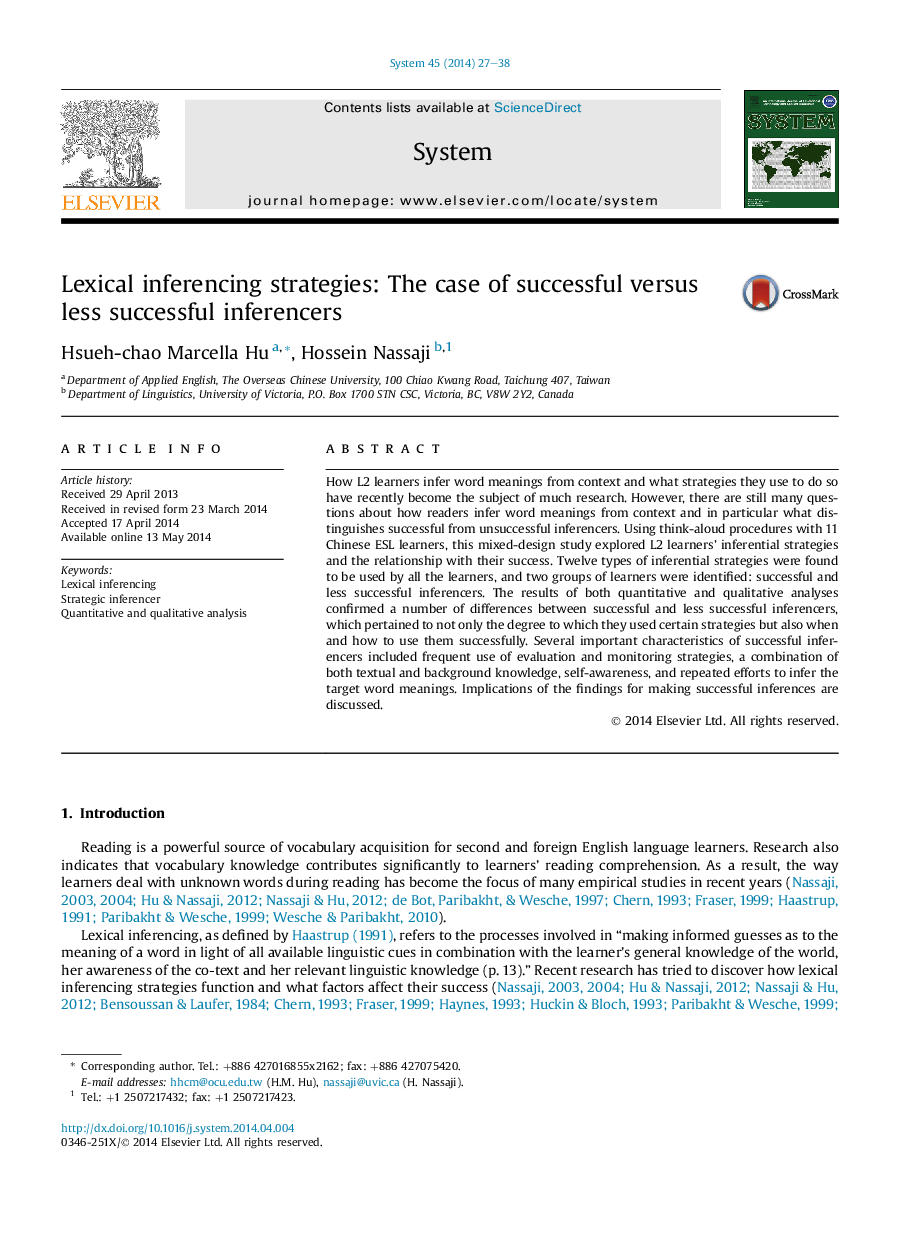| Article ID | Journal | Published Year | Pages | File Type |
|---|---|---|---|---|
| 373331 | System | 2014 | 12 Pages |
How L2 learners infer word meanings from context and what strategies they use to do so have recently become the subject of much research. However, there are still many questions about how readers infer word meanings from context and in particular what distinguishes successful from unsuccessful inferencers. Using think-aloud procedures with 11 Chinese ESL learners, this mixed-design study explored L2 learners' inferential strategies and the relationship with their success. Twelve types of inferential strategies were found to be used by all the learners, and two groups of learners were identified: successful and less successful inferencers. The results of both quantitative and qualitative analyses confirmed a number of differences between successful and less successful inferencers, which pertained to not only the degree to which they used certain strategies but also when and how to use them successfully. Several important characteristics of successful inferencers included frequent use of evaluation and monitoring strategies, a combination of both textual and background knowledge, self-awareness, and repeated efforts to infer the target word meanings. Implications of the findings for making successful inferences are discussed.
